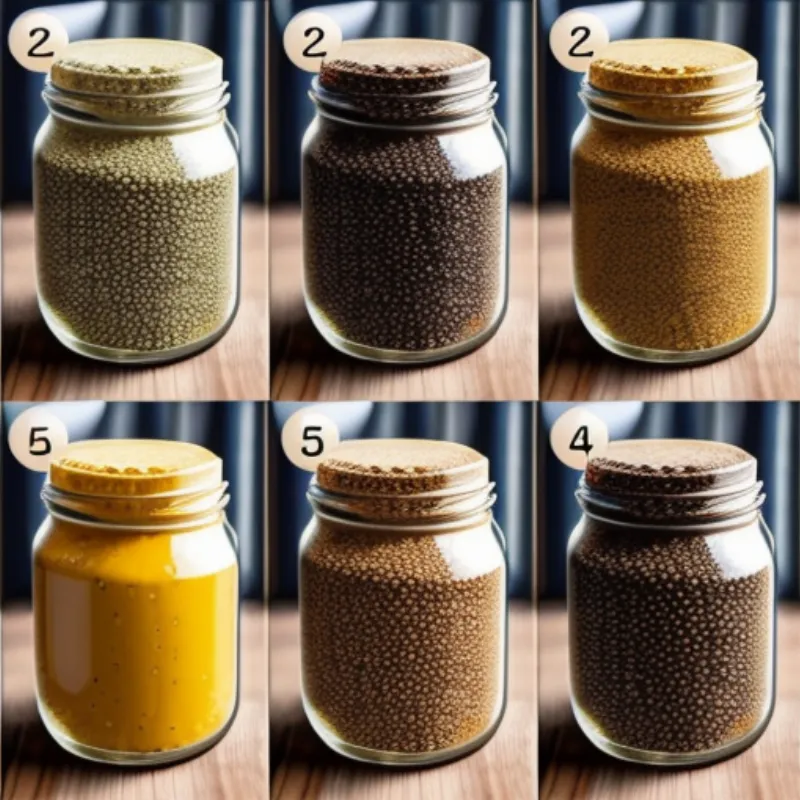Mustard, the vibrant condiment that adds a delightful kick to countless dishes, boasts a history as rich as its flavor. From its humble beginnings as a ground seed paste in ancient Rome to its modern-day status as a global pantry staple, mustard’s journey through time is truly fascinating.
In this article, we’ll embark on a culinary adventure, guiding you step-by-step on How To Make Mustard at home. Get ready to unlock a world of flavor possibilities and impress your friends and family with your homemade mustard prowess.
Unlocking the Secrets of Homemade Mustard
Many people are surprised to learn that making mustard at home is remarkably simple. With just a few basic ingredients and a touch of culinary curiosity, you can create a condiment that surpasses anything you can find in a store.
Gathering Your Mustard-Making Arsenal
Ingredients:
- Mustard Seeds: The heart and soul of your mustard! Experiment with different varieties like yellow, brown, or black mustard seeds for unique flavor profiles.
- Liquid: Water is the standard, but feel free to get creative! Beer, wine, vinegar, or even fruit juice can add intriguing dimensions to your mustard.
- Salt: A pinch of salt enhances the flavors and acts as a natural preservative.
- Spices: Here’s where your creativity shines! Add warmth with ground turmeric, a touch of heat with chili flakes, or a hint of sweetness with honey or maple syrup.
Equipment:
- Small bowl
- Whisk
- Airtight container for storage
Crafting Your Mustard Masterpiece
Instructions:
- Combine and Rest: In your bowl, whisk together 1/4 cup mustard seeds and 1/2 cup of your chosen liquid. Cover the bowl and let the mixture sit at room temperature for at least 2 hours, or preferably overnight. This allows the seeds to soften and release their flavor.
- Blend to Perfection: Transfer the mixture to a blender or food processor. Add in your salt and any additional spices. Begin blending on low speed, gradually increasing the speed until your desired consistency is reached.
- Taste and Adjust: Taste your mustard and adjust the seasonings as needed. If you prefer a thinner consistency, add a teaspoon of liquid at a time until you’re happy with the texture.
- Patience is Key: Transfer your freshly made mustard to an airtight container and refrigerate for at least 24 hours. This allows the flavors to meld and develop fully.
Chef’s Tip: “Don’t be afraid to experiment with different flavor combinations! Try adding a splash of apple cider vinegar for a tangy twist, or incorporate a spoonful of honey for a touch of sweetness.” – Chef Emily Carter, Culinary Institute of America.
 Types of Mustard Seeds
Types of Mustard Seeds
Exploring the Mustard Flavor Spectrum
FAQs:
Q: Can I adjust the spiciness of my homemade mustard?
A: Absolutely! The type of mustard seeds you choose will greatly influence the heat level. Yellow mustard seeds are the mildest, while brown and black mustard seeds pack a more pungent punch. You can also adjust the spiciness by adding chili flakes or other spicy ingredients to your liking.
Q: How long will my homemade mustard last?
A: When stored properly in an airtight container in the refrigerator, your homemade mustard can last for several months, or even longer.
Q: What are some creative ways to use homemade mustard?
A: The possibilities are endless! Use it as a spread for sandwiches and wraps, a flavorful addition to salad dressings and marinades, or a dipping sauce for pretzels, vegetables, and more. Homemade mustard also adds a delightful kick to deviled eggs, potato salad, and even mac and cheese!
 Homemade Mustard Making Process
Homemade Mustard Making Process
Mustard: A Condiment for All Occasions
Homemade mustard is incredibly versatile and pairs perfectly with a wide array of dishes. Here are a few serving suggestions to inspire your culinary creations:
- Classic Pairings: Hot dogs, pretzels, sausages, grilled meats.
- Salads: Elevate your salads with a homemade mustard vinaigrette or add a dollop of mustard to your favorite potato or chicken salad recipe.
- Sandwiches: Spread a generous layer of your homemade mustard on sandwiches and wraps for an extra burst of flavor.
- Dips & Sauces: Incorporate your mustard into dips for vegetables, chips, and crackers. It also adds a delicious twist to cheese sauces and dips.
 Serving Ideas with Homemade Mustard
Serving Ideas with Homemade Mustard
Embracing the Joy of Homemade Flavors
There’s a special satisfaction that comes with creating something delicious from scratch, and homemade mustard is no exception. This simple yet rewarding culinary endeavor allows you to control the ingredients, customize the flavors, and impress your taste buds with every bite. So gather your ingredients, unleash your inner chef, and embark on your mustard-making adventure today!
